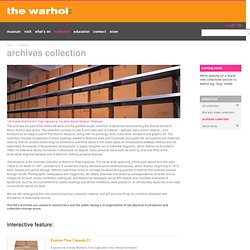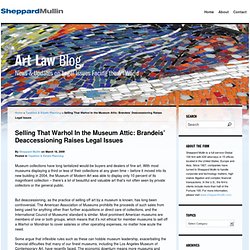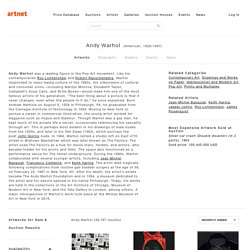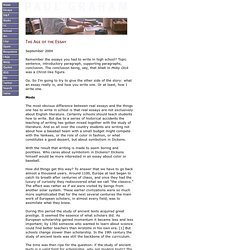

Andy Warhol Museum (TheWarholMuseum) Andy. The Art Law Blog. Art and Culture Law - Guide to Art and Cultural Property Law. Art law is a unique specialty area of the law.

After all, art occupies many roles in our culture and serves many functions for businesses, governments, museums, families, and artists. Art can be a form of expression, it can be a decoration, it can be a currency, and it can serve as the basis for many careers. Common issues for art law include how works of art should be valued, how to protect intellectual property rights in art, free speech issues, authenticating and dealing with stolen artworks, and a variety of business issues related to the art industry. Art valuation is particularly important for determining tax consequences of dealing in art and for testamentary purposes.
It also has relevance to insurance claims disputes, and when using the art pieces for collateral when obtaining a loan. Intellectual property interests in art include protecting copyrights to various works and determining whether a piece was created independently or as a work for hire. Copyright HG.org. Art and Culture Law - Guide to Art and Cultural Property Law. The Art Law Blog. Legal Issues in Museum Deaccessioning. Museum archives collection. 138 of Andy Warhol's 610 Time Capsules at The Andy Warhol Museum, Pittsburgh The archives are part of the artist's life work and the greatest single collection of ephemera documenting the diverse worlds in which Warhol was active.

The collection consists of over 8,000 cubic feet of material – perhaps half a million objects – and functions as an integral part of The Warhol Museum, along with his paintings, films, video work, sculpture and graphic art. The keystone of the archives collection is Warhol's Time Capsules. This serial work, spanning a thirty-year period from the early 1960s to his death in 1987, consists of 612 containers (mainly standard-sized cardboard boxes), which Warhol, beginning in 1974, filled, sealed and sent to storage. Warhol used these boxes to manage the bewildering quantity of material that routinely passed through his life. Warhol's archives are closed to researchers and the public during a re-organization of the physical workspaces and collection storage areas. Selling That Warhol In the Museum Attic: Brandeis' Deaccessioning Raises Legal Issues : Art Law Gallery. Museum collections have long tantalized would-be buyers and dealers of fine art.

With most museums displaying a third or less of their collections at any given time – before it moved into its new building in 2004, the Museum of Modern Art was able to display only 10 percent of its magnificent collection – there’s a lot of beautiful and valuable art that’s not often seen by private collectors or the general public. But deaccessioning, as the practice of selling off art by a museum is known, has long been controversial. The American Association of Museums prohibits the proceeds of such sales from being used for anything other than further acquisitions or direct care of collections, and the International Council of Museums’ standard is similar. Most prominent American museums are members of one or both groups, which means that it’s not ethical for member museums to sell off a Warhol or Mondrian to cover salaries or other operating expenses, no matter how acute the need.
N.Y. Welcome to the Andy Warhol Museum. Andy Warhol Online. About andy. Andy Warhol on artnet. Andy Warhol was a leading figure in the Pop Art movement.

Like his contemporaries Roy Lichtenstein and Robert Rauschenberg, Warhol responded to mass-media culture of the 1960s. His silkscreens of cultural and consumer icons—including Marilyn Monroe, Elizabeth Taylor, Campbell’s Soup Cans, and Brillo Boxes—would make him one of the most famous artists of his generation. “The best thing about a picture is that it never changes, even when the people in it do,” he once explained. Born Andrew Warhola on August 6, 1928 in Pittsburgh, PA, he graduated from the Carnegie Institute of Technology in 1949. Moving to New York to pursue a career in commercial illustration, the young artist worked for magazine such as Vogue and Glamour. Andy Warhol - A Biography of Andy Warhol. Who Was Andy Warhol?

Andy Warhol was one of the most important artists of pop art, which became extremely popular in the second half of the twentieth century. Though he is best remembered for his paintings of Campbell's soup cans, he also created hundreds of other works including commercial advertisements and films. Dates: August 6, 1928 -- February 22, 1987 Also Known As: Andrew Warhola (born as), Prince of Pop. Andy Warhol. Andy Warhol (/ˈwɔrhɒl/;[1] August 6, 1928 – February 22, 1987) was an American artist who was a leading figure in the visual art movement known as pop art.

His works explore the relationship between artistic expression, celebrity culture and advertisement that flourished by the 1960s. After a successful career as a commercial illustrator, Warhol became a renowned and sometimes controversial artist. Andy Warhol. New York. The Age of the Essay. September 2004 Remember the essays you had to write in high school?

Topic sentence, introductory paragraph, supporting paragraphs, conclusion. The conclusion being, say, that Ahab in Moby Dick was a Christ-like figure. Oy. So I'm going to try to give the other side of the story: what an essay really is, and how you write one. Mods The most obvious difference between real essays and the things one has to write in school is that real essays are not exclusively about English literature. With the result that writing is made to seem boring and pointless. How did things get this way? During this period the study of ancient texts acquired great prestige.
The time was then ripe for the question: if the study of ancient texts is a valid field for scholarship, why not modern texts? And so began the study of modern literature. What tipped the scales, at least in the US, seems to have been the idea that professors should do research as well as teach.